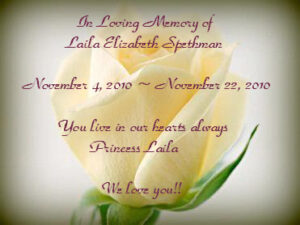Reminiscing
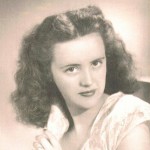
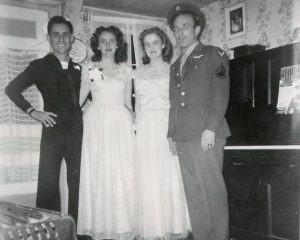 My aunt, Evelyn Hushman was the oldest sibling of my grandparents, George and Hattie Byer. While she and my mom were eight years between Aunt Evelyn and my mom, Collene Spencer were good friends, as well as being sisters. When my mom and dad, Allen Spencer were dating, they sometimes double dated with Aunt Evelyn and her husband, George Hushman, who were married six years before my parents. They were all good friends and remained good friends for the rest of their lives. Probably the strangest double date was the one where a train, with no lights, blowing no whistle, at a dark uncontrolled crossing, hit their car. If Uncle George hadn’t caught it out of the corner of his eye and yelled at my dad; and had my dad not responded quickly turning with the train and causing only damage to the vehicle, the collision could have been disastrous. Both couples walked away unhurt…the car, not so much!!
My aunt, Evelyn Hushman was the oldest sibling of my grandparents, George and Hattie Byer. While she and my mom were eight years between Aunt Evelyn and my mom, Collene Spencer were good friends, as well as being sisters. When my mom and dad, Allen Spencer were dating, they sometimes double dated with Aunt Evelyn and her husband, George Hushman, who were married six years before my parents. They were all good friends and remained good friends for the rest of their lives. Probably the strangest double date was the one where a train, with no lights, blowing no whistle, at a dark uncontrolled crossing, hit their car. If Uncle George hadn’t caught it out of the corner of his eye and yelled at my dad; and had my dad not responded quickly turning with the train and causing only damage to the vehicle, the collision could have been disastrous. Both couples walked away unhurt…the car, not so much!!
The couples also attended the military ball, and later they bowled on the same league together. They just enjoyed spending time together. While Aunt Evelyn and Uncle George’s five kids were older that my sisters and me, (my cousin Greg Hushman is just a month older that my oldest sister, Cheryl Masterson), we all got along well, and our parents made sure we got lots of playtime together. I’m sure that they also figured that with so many kids, it was getter to just get us together and maybe we would entertain each other. We did, but I can’t say that we never got into trouble either…not any real trouble anyway.
Their weekly “double dates” ended when they quit bowling, and the was probably a rather sad time for all of 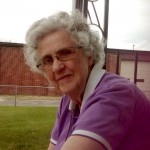
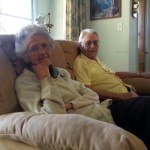 them…like the end of an era. I suppose that all things must come to an end, but that doesn’t mean we have to like it too. Aunt Evelyn bowled for quite some time after that, and I bowled on her team as a sub sometimes, but she was the only one of the four that continued to bowl for a time. Now, all four of them are together in Heaven again. I wonder if they still get together for outings and dinners. Maybe they even go bowling, who knows. I like to think of them that way. Today would have been Aunt Evelyn’s 95th birthday. Happy birthday in Heaven, Aunt Evelyn. We love and miss you very much.
them…like the end of an era. I suppose that all things must come to an end, but that doesn’t mean we have to like it too. Aunt Evelyn bowled for quite some time after that, and I bowled on her team as a sub sometimes, but she was the only one of the four that continued to bowl for a time. Now, all four of them are together in Heaven again. I wonder if they still get together for outings and dinners. Maybe they even go bowling, who knows. I like to think of them that way. Today would have been Aunt Evelyn’s 95th birthday. Happy birthday in Heaven, Aunt Evelyn. We love and miss you very much.
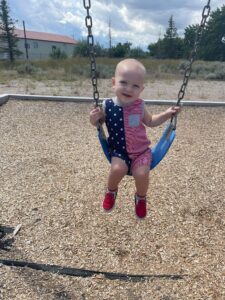
 My great grandnephew, Aysa Balcerzak is such a happy little boy. As with all two-year-old boys, he is curious, fearless, and wants to do anything his big sister, Reece is doing. Aysa is so energetic…bouncing all over the place. He and his sister love to dance around the house, and Aysa does his best to dance just like his big sis, but he isn’t really very successful at that…yet anyway. Reece, being the oldest, has had some dance lessons, and Aysa probably won’t, because while he likes doing what his sister does, dancing is not likely to be his career of choice. I could be wrong, but it seems unlikely, because Aysa is all boy. Still, the music “moves him” so he will most likely do some dancing in his lifetime. And he knows how to ham it up.
My great grandnephew, Aysa Balcerzak is such a happy little boy. As with all two-year-old boys, he is curious, fearless, and wants to do anything his big sister, Reece is doing. Aysa is so energetic…bouncing all over the place. He and his sister love to dance around the house, and Aysa does his best to dance just like his big sis, but he isn’t really very successful at that…yet anyway. Reece, being the oldest, has had some dance lessons, and Aysa probably won’t, because while he likes doing what his sister does, dancing is not likely to be his career of choice. I could be wrong, but it seems unlikely, because Aysa is all boy. Still, the music “moves him” so he will most likely do some dancing in his lifetime. And he knows how to ham it up.
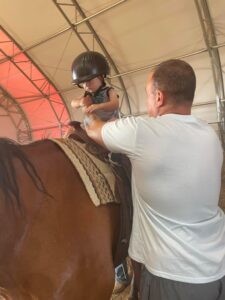
Aysa’s parents try to give their children a variety of activities to try out, and I personally think that little Aysa rather likes the horse he got to try. What kid wouldn’t, after all? He didn’t seem to be afraid, but then his daddy, Keifer Balcerzak was right there holding him, so the ground didn’t seem so far down, and the horse didn’t seem quite so big, and if Daddy thought it was ok, it must be. I’m sure there will be many new experiences in the future. Keifer plays baseball, and I’m sure that he is looking forward to the day when he can get his son started in T-Ball and beyond. Someday I’m sure they will be on a father/son team, just like Keifer has been with his dad, Aysa’s grandpa, Dave Balcerzak. With the love of sports that runs in the Balcerzak clan, I’m sure there will be other enjoyable events in Aysa’s life too…like football games to watch and maybe play. Of course, those things are down the road a little be, because Aysa is only two years old, after all.

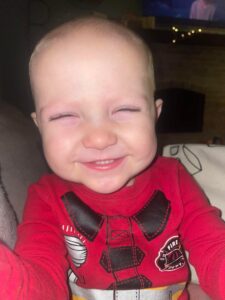
While Daddy may be Aysa’s best buddy, his mommy, Katie Balcerzak is definitely his cuddle of choice. As we all know, things like scraped knees, bumped heads, and fights with big sister require a little hug from the one person who can always make it all better…Mommy. She has been the person who nurtured him, and yet, allowed him to be all boy. She was the person who made sure that when he had to go do girl’s stuff with his big sis, he had snacks to make it all worthwhile. Mommies really are the best…at least until the teenage years. Then, all bets are off!! Still, Aysa’s parents are pretty cool, so I’m sure it will be fine. Today is Aysa’s 2nd birthday. Happy birthday Aysa!! Have a great day!! We love you!!
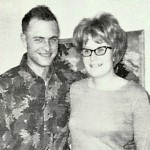
 My husband, Bob’s uncle, Eddie Hein was a sweet man who was an encouragement to many people. His children were his pride and joy, and he would do anything in his power to make their lives better. When Larry wanted to open a mechanics shop, Eddie was totally onboard. Eddie always loved mechanics, and seeing Larry start a career in that field was pleasing to him. Eddie loved vintage cars and would have loved to spend hours working to restore them. Of course, that wasn’t feasible, so watching his same work on cars sometimes filled the mechanics gap, in his life…at least the one that existed in his latter years.
My husband, Bob’s uncle, Eddie Hein was a sweet man who was an encouragement to many people. His children were his pride and joy, and he would do anything in his power to make their lives better. When Larry wanted to open a mechanics shop, Eddie was totally onboard. Eddie always loved mechanics, and seeing Larry start a career in that field was pleasing to him. Eddie loved vintage cars and would have loved to spend hours working to restore them. Of course, that wasn’t feasible, so watching his same work on cars sometimes filled the mechanics gap, in his life…at least the one that existed in his latter years.
His daughter, Kim Arani had very different goals and dreams than her dad, which makes sense. Most women don’t dream of becoming a mechanic. Kim chose later to move to Texas, because she absolutely hates the Montana winters, and I can’t say as I blame her. Even though Kim lived far away know, Eddie and Pearl were very supportive of her dreams, and were very excited to attend her wedding and give the bride away. It was a dream wedding, and while Eddie had suffered a stroke prior to the wedding, he was able to make the trip and walk his daughter down the aisle…on the beach.
While Eddie was dedicated to his children, Larry and Kim, he was most dedicated to his loving wife, Pearl. When they were off work, they were together. They gardened together and worked on the house together. Their lives 
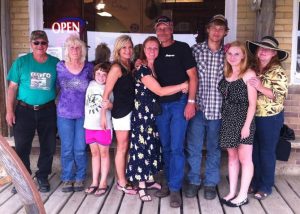 were intertwined. When Eddie had his stroke, Pearl really stepped up to make sure Eddie had everything he needed. She drove him lots of miles to do his therapy. She took care of him at home. She nursed him back to health, and Eddie was grateful. He knew he loved her from the very start, and she proved to be the best thing that ever happened to him. Today would have been Eddie’s 80th birthday. Happy birthday in Heaven, Eddie!! We love and miss you very much!!
were intertwined. When Eddie had his stroke, Pearl really stepped up to make sure Eddie had everything he needed. She drove him lots of miles to do his therapy. She took care of him at home. She nursed him back to health, and Eddie was grateful. He knew he loved her from the very start, and she proved to be the best thing that ever happened to him. Today would have been Eddie’s 80th birthday. Happy birthday in Heaven, Eddie!! We love and miss you very much!!

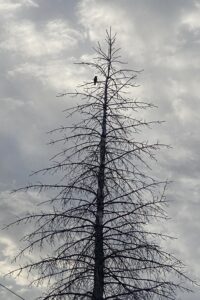 I am a summer girl, but I also like spring and fall, unless they try to act too much like winter. For the most part, I really don’t like winter at all. In Wyoming, winter means cold, wind, and snow…all dirty four-letter words, if you ask me. Nevertheless, I am not opposed to the time change, like many other people are. For me, the “Spring back” part of the change, which gives an extra hour of light in the early morning is very nice, because I love to go walk in the early morning, and as the darker days ascend on us, I can no longer head out to walk at 6:30 in the morning, because it is too dark. I much wait until later in the day to try for a walk on the path near my house…if the four-letter word, wind doesn’t rear its ugly head, that is.
I am a summer girl, but I also like spring and fall, unless they try to act too much like winter. For the most part, I really don’t like winter at all. In Wyoming, winter means cold, wind, and snow…all dirty four-letter words, if you ask me. Nevertheless, I am not opposed to the time change, like many other people are. For me, the “Spring back” part of the change, which gives an extra hour of light in the early morning is very nice, because I love to go walk in the early morning, and as the darker days ascend on us, I can no longer head out to walk at 6:30 in the morning, because it is too dark. I much wait until later in the day to try for a walk on the path near my house…if the four-letter word, wind doesn’t rear its ugly head, that is.
Oh, I know many people don’t agree, because they are now feeling like the evening comes far too soon, and they don’t like driving home from work in the dark. As my daughter, Amy Royce said when we were discussing the time change (she’s not a fan), and I pointed out the light early mornings to her, “Hahaha!! It’s six of one or half a dozen of the other!!” Yes, that is true, but for me, the fact that I’m retired, and don’t have to drive home in the dark, it doesn’t really matter…most of the time.
This morning, however, it mattered. This morning was a balmy 51° with only eight mile per hour winds. That coupled with the fact that the time change made it light at 6:30, meant that my walk was on. It was what I 
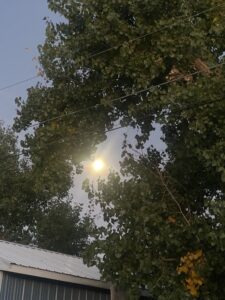 would call a November Gift. The sky was gray, and that isn’t my favorite sky color, but I can deal with that. It tried to act like it was going to rain, but only accomplished a few little sprinkles, so I kept going. I prefer the warm, early morning summer days, but November does hide another good thing…the bugs are gone. In the summer I need bug repellant, and now I don’t. Of course, if there was a rogue bug out there, he couldn’t find my skin…except for my face, so it’s a wash. I will always prefer late spring and summer to late fall and winter, but I’m not one to let a good gift go to waste either. Having a morning in November with perfect walking conditions is a rare thing indeed, and I quickly got going and headed out to enjoy that November Gift.
would call a November Gift. The sky was gray, and that isn’t my favorite sky color, but I can deal with that. It tried to act like it was going to rain, but only accomplished a few little sprinkles, so I kept going. I prefer the warm, early morning summer days, but November does hide another good thing…the bugs are gone. In the summer I need bug repellant, and now I don’t. Of course, if there was a rogue bug out there, he couldn’t find my skin…except for my face, so it’s a wash. I will always prefer late spring and summer to late fall and winter, but I’m not one to let a good gift go to waste either. Having a morning in November with perfect walking conditions is a rare thing indeed, and I quickly got going and headed out to enjoy that November Gift.
 Vnukovo Airport was experiencing heavy fog on November 5, 1946. Due to the resulting low visibility conditions and a high number of aircraft bound for Moscow, including an Aeroflot LI-2 (registration CCCP-L4181) that was being ferried from Voronezh to Moscow. The LI-2, along with a number of other planes, were put in a holding pattern for 75 minutes. These things are a common practice, but maybe not for so long.
Vnukovo Airport was experiencing heavy fog on November 5, 1946. Due to the resulting low visibility conditions and a high number of aircraft bound for Moscow, including an Aeroflot LI-2 (registration CCCP-L4181) that was being ferried from Voronezh to Moscow. The LI-2, along with a number of other planes, were put in a holding pattern for 75 minutes. These things are a common practice, but maybe not for so long.
Finally, at 5:45pm, local time, the crew of the LI-2 was cleared to land and began their approach, still in a thick fog. It was a difficult approach, and the crew decided to go around. In all, five ADF approaches under radar guidance were attempted. Unfortunately, during the fifth approach the plane suffered fuel exhaustion. Immediately, the plane lost altitude and struck light poles and crashed. Fog creates very unique problems, and to complicate matters, that night three Aeroflot aircraft also crashed near Vnukovo Airport, killing a total of 19 occupants.
The first one, Aeroflot LI-2 (registration CCCP-L4181) crashed near Yamshchina, Moskovskaya, Russia. The determined cause was fuel exhaustion after being in a holding pattern for two hours, killing all five crew on board. Then, an Aeroflot C-47 (registration CCCP-L946) crashed in fog at Vnukovo Airport while attempting a go-around after being in a holding pattern for two hours, killing 13 of the 26 on board. Finally, an Aeroflot LI-2 (registration CCCP-L4207) crashed at Vnukovo Airport after repeated landing attempts due to fuel exhaustion after being in a holding pattern for 75 minutes, killing one of 26 on board.
The Vnukovo Airport is Moscow’s oldest operating airport. Originally opened for military operations during the Second World War, it became a civilian facility after the war. The Soviet government approved its construction in 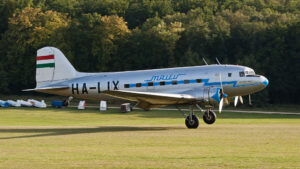 1937, because the older Khodynka Aerodrome, which was located much closer to the city center, was becoming overloaded. That airport closed by the 1980s. Vnukovo was built by several thousand inmates of Likovlag, which was a Gulag concentration camp created specifically for this purpose. Vnukovo opened on July 1, 1941. While the airport was old, it was not the cause of the November 5, 1946 crashes. More likely the pilots and flight controllers, who were preoccupied with the fog, simply forgot to monitor the fuel levels, and missed the fact that they were dangerously low. It is odd, however, that three were missed at the same time, and very sad that 19 people lost their lives because of it.
1937, because the older Khodynka Aerodrome, which was located much closer to the city center, was becoming overloaded. That airport closed by the 1980s. Vnukovo was built by several thousand inmates of Likovlag, which was a Gulag concentration camp created specifically for this purpose. Vnukovo opened on July 1, 1941. While the airport was old, it was not the cause of the November 5, 1946 crashes. More likely the pilots and flight controllers, who were preoccupied with the fog, simply forgot to monitor the fuel levels, and missed the fact that they were dangerously low. It is odd, however, that three were missed at the same time, and very sad that 19 people lost their lives because of it.
 The Cold War, and the Soviet Union’s sudden announcement on August 30, 1961, to end a three-year moratorium on nuclear testing, brought about a shift in US policy, and a number of to nuclear test operations. One, known as Operation Fishbowl was a series of high-altitude nuclear tests in 1962 that were carried out by the United States as a part of the larger Operation Dominic nuclear test program. Flight-test vehicles were designed and manufactured by Avco Corporation. The test planned for the first half of 1962, called Bluegill, Starfish and Urraca were originally planned for the first half of 1962, but the first test attempt was delayed until June. Planning was complex, but necessary.
The Cold War, and the Soviet Union’s sudden announcement on August 30, 1961, to end a three-year moratorium on nuclear testing, brought about a shift in US policy, and a number of to nuclear test operations. One, known as Operation Fishbowl was a series of high-altitude nuclear tests in 1962 that were carried out by the United States as a part of the larger Operation Dominic nuclear test program. Flight-test vehicles were designed and manufactured by Avco Corporation. The test planned for the first half of 1962, called Bluegill, Starfish and Urraca were originally planned for the first half of 1962, but the first test attempt was delayed until June. Planning was complex, but necessary.
The launch sites were planned from Johnston Island in the Pacific Ocean north of the equator. The island was the chosen launch site, rather than the other locations in the Pacific Proving Grounds. However, the testing was not without push back. Even as early as 1958, Lewis Strauss, t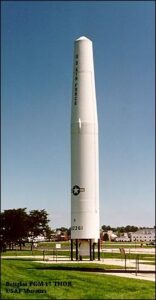 hen chairman of the United States Atomic Energy Commission, opposed doing any high-altitude tests at locations that had been used for earlier Pacific nuclear tests. The motivation for concern was the fear of the flash from the nighttime high-altitude detonations might blind civilians who were living on nearby islands. Still, Johnston Island was a remote location. It was more distant from populated areas than the other potential test locations. Nevertheless, in order to protect residents of the Hawaiian Islands from flash blindness or permanent retinal injury from the bright nuclear flash, the nuclear missiles of Operation Fishbowl were launched toward the southwest of Johnston Island. The detonation part of the test would be farther from Hawaii.
hen chairman of the United States Atomic Energy Commission, opposed doing any high-altitude tests at locations that had been used for earlier Pacific nuclear tests. The motivation for concern was the fear of the flash from the nighttime high-altitude detonations might blind civilians who were living on nearby islands. Still, Johnston Island was a remote location. It was more distant from populated areas than the other potential test locations. Nevertheless, in order to protect residents of the Hawaiian Islands from flash blindness or permanent retinal injury from the bright nuclear flash, the nuclear missiles of Operation Fishbowl were launched toward the southwest of Johnston Island. The detonation part of the test would be farther from Hawaii.
The Urraca test involved about a 1 megaton yield at very high altitude of just over 621 miles. With the damage caused to satellites by the Starfish Prime detonation, the proposed Urraca test was always controversial. Because they couldn’t put the fears to rest, the Urraca test was finally canceled, and an extensive re-evaluation of the Operation Fishbowl plan as a whole was made during the 82-day operations pause after the Bluegill Prime disaster of July 25, 1962. When prime was added to a test, it indicated that the main test had failed, so when Bluegill Prime failed, it was the second test fail for that test series, which in this case (Bluegill Double Prime), ended in disaster when the Thor suffered a stuck valve preventing the flow of LOX to the combustion chamber. The engine lost thrust and unburned RP-1 spilled down into the hot thrust chamber, igniting and starting a fire around the base of the missile. Bluegill would go on to have two more tests, before they finally achieved success.

A test named Kingfish was added during the early stages of Operation Fishbowl planning. Two low-yield tests, Checkmate and Tightrope, were also added during the project, so the final number of tests in Operation Fishbowl was five. Tightrope was the last atmospheric nuclear test conducted by the United States, as the Limited Test Ban Treaty came into effect shortly thereafter. A total of Seven rockets carrying scientific instrumentation were launched from Johnston Island in support of the Tightrope test, which was the final atmospheric test conducted by the United States. I suppose testing is necessary, and I don’t know where else or how else it could be done, but the whole thing seems crazy to me. I do think that in light of this and other nuclear test disasters, care should be taken to better protect human life.

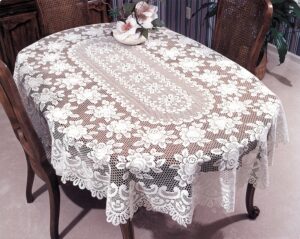 Tablecloths…usually used to dress up a table, often for a holiday dinner these days, were not always used for that purpose. Children wiping their mouths on tablecloths isn’t generally acceptable at the dinner table these days, but that was their original use! It was like a community napkin. Guests were meant to wipe off their hands and face on a tablecloth after a messy feast, and not do this would be considered bad table manners! These days it’s pretty much the opposite. The idea is to try not to “spill” or otherwise mess up the tablecloth.
Tablecloths…usually used to dress up a table, often for a holiday dinner these days, were not always used for that purpose. Children wiping their mouths on tablecloths isn’t generally acceptable at the dinner table these days, but that was their original use! It was like a community napkin. Guests were meant to wipe off their hands and face on a tablecloth after a messy feast, and not do this would be considered bad table manners! These days it’s pretty much the opposite. The idea is to try not to “spill” or otherwise mess up the tablecloth.
While original tablecloths were usually white…another odd idea, considering the practice of wiping one’s mouth and hands with the cloth, today’s version is often colorful, and decorative to match the holiday currently being celebrated. The most common shapes for tablecloths are round, square, oval, and oblong, or rectangular, corresponding to the most common table shapes. Tablecloths usually have an overhang, referred to as the “drop” of about 6 to 15 inches on each side of the table. The shorter drop is usually for casual dining and a longer drop for more formal occasions. Sometimes a floor-length cloth is used. Custom-made tablecloths are also available, and some people choose to make their own.
Some tablecloths are just decorative, and often used on a wooden table to help protect the table from scratches and stains. Others are designed to be spread on a dining table before laying out tableware and food. In formal settings, tablecloths are designed as part of an overall table setting, with coordinating napkins, placemats, or other decorative pieces, and in very formal settings the might also be “runners” overhanging the table at two ends only and “table protectors” which provide a padded layer under a normal tablecloth.
Today’s more casual, and less expensive tablecloths are typically made of cotton, and some have a poly-cotton blend, or a PVC-coated material that can be wiped clean. Of course, any material works, and some people use delicate fabrics like embroidered silk. Today, the biggest consideration, at least in casual settings, is ease of cleanup, so the material might be chosen for its ability to fight stains.
Of course, one more use for a tablecloth, was in shows, where the tablecloth is quickly pulled from under a set table full of food. The idea is to pull it quickly enough to leave the table’s contents in place while pulling the cloth from under them. This trick relies on inertia. It is known as a tablecloth pull or a tablecloth yank. Unless 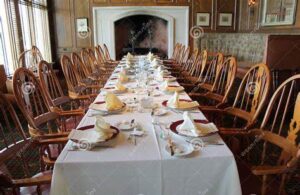
 you are prepared for the cleanup following such a trick, I wouldn’t exactly recommend trying that one. I think most of us knew most of these uses, but maybe not the original use. Nevertheless, now you know. I would be careful using the tablecloth in that way at your next family dinner, however. It might not be appreciated.
you are prepared for the cleanup following such a trick, I wouldn’t exactly recommend trying that one. I think most of us knew most of these uses, but maybe not the original use. Nevertheless, now you know. I would be careful using the tablecloth in that way at your next family dinner, however. It might not be appreciated.
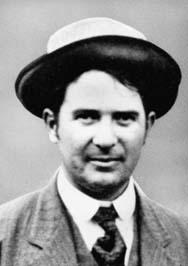 Cheerleaders are a staple of the sporting scene. Often seen at football games, they are also at other sporting event. Still, football is the main one, but how did cheerleading get started. It wasn’t some sort of organized decision by coaches or schools, but rather it was a spontaneous action that turned into something we all know about and enjoy watching, and something that many girls (and guys too) dream about becoming.
Cheerleaders are a staple of the sporting scene. Often seen at football games, they are also at other sporting event. Still, football is the main one, but how did cheerleading get started. It wasn’t some sort of organized decision by coaches or schools, but rather it was a spontaneous action that turned into something we all know about and enjoy watching, and something that many girls (and guys too) dream about becoming.
November 2, 1898, is officially recognized as the “birth of cheerleading.” It all started at the University of Minnesota, when student Johnny Campbell directed fans in cheering on the Golden Gophers football team, cheering “Rah, Rah, Rah! Ski-u-mah, Hoo-Rah! Hoo-Rah! Varsity! Varsity! Varsity, Minn-e-So-Tah!” That made Campbell the very first cheerleader. The whole thing was so well received, that soon after that, the University of Minnesota organized a “yell leader” squad of six male students, who still use Campbell’s original cheer today. Good thing the name “yell squad” didn’t take!! Prior to Campbell’s date with history, cheering existed, of course, just not in this new form. Prior to November 2, 1898, the fans 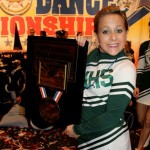 cheered at the game…meaning they yelled, screamed, and jumped up and down. Fans that would start cheers in the stands were called “cheerleaders,” on an unofficial basis, but they really weren’t officially leaders, just initiators. That day however, Campbell made history when he jumped down in front of the fans to lead an organized cheer.
cheered at the game…meaning they yelled, screamed, and jumped up and down. Fans that would start cheers in the stands were called “cheerleaders,” on an unofficial basis, but they really weren’t officially leaders, just initiators. That day however, Campbell made history when he jumped down in front of the fans to lead an organized cheer.
I don’t think everyone realizes just how important the cheerleaders are. Sometimes, when the game seems lost, the cheerleaders are solely responsible for lifting the spirits of fans and players alike. Sometimes, it encourages the players to press on, and other times it just tells them, “We love you anyway.” Today, most high school, college, and 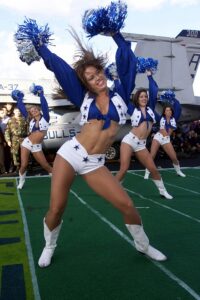 professional sports teams have cheerleaders, with a few notable exceptions. The Cleveland Browns famously or infamously do not and never have had cheerleaders, and for this year neither do the Bills, Bears, Chargers, Giants, Packers, or Steelers. The Dallas Cowboy cheerleaders are probably one of the most famous of cheerleading organizations and for them it is a seriously big production. Tryouts are rigorous and highly competitive. The cheerleading squads these days are bigger than they used to be too. There are also competitions that are held each year too. It is now considered a sport in most schools. In fact, in the colleges, the cheerleaders have to sign a contract to be there and plan to stay with it for the entire season. Usually, there are scholarships attached to cheerleading, and the practice session and games are mandatory, with strict rules on allowed absences. Cheerleaders are an important aspect of college sports, and the squads must be dedicated. Cheerleading has come a long way since 1898, and I think most people would agree, that it’s been a good thing.
professional sports teams have cheerleaders, with a few notable exceptions. The Cleveland Browns famously or infamously do not and never have had cheerleaders, and for this year neither do the Bills, Bears, Chargers, Giants, Packers, or Steelers. The Dallas Cowboy cheerleaders are probably one of the most famous of cheerleading organizations and for them it is a seriously big production. Tryouts are rigorous and highly competitive. The cheerleading squads these days are bigger than they used to be too. There are also competitions that are held each year too. It is now considered a sport in most schools. In fact, in the colleges, the cheerleaders have to sign a contract to be there and plan to stay with it for the entire season. Usually, there are scholarships attached to cheerleading, and the practice session and games are mandatory, with strict rules on allowed absences. Cheerleaders are an important aspect of college sports, and the squads must be dedicated. Cheerleading has come a long way since 1898, and I think most people would agree, that it’s been a good thing.

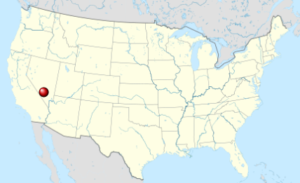 Our government has been known, in its history, to do some things that really were underhanded, and in some cases horrific. The “need” for nuclear bombs naturally facilitated the need for nuclear testing. I think everyone knows that would had to have happened, but on November 1, 1951, the US Army conducted nuclear tests in the Nevada desert that included a “diabolical exercise in which 6500 US Army troops were exposed to the effects of a nearby nuclear detonation and its associated radiation.” When I read that, I was furious. They knew what they were doing, and they did it as an experiment…just to see what would happen to those poor men.
Our government has been known, in its history, to do some things that really were underhanded, and in some cases horrific. The “need” for nuclear bombs naturally facilitated the need for nuclear testing. I think everyone knows that would had to have happened, but on November 1, 1951, the US Army conducted nuclear tests in the Nevada desert that included a “diabolical exercise in which 6500 US Army troops were exposed to the effects of a nearby nuclear detonation and its associated radiation.” When I read that, I was furious. They knew what they were doing, and they did it as an experiment…just to see what would happen to those poor men.
It was called Operation Buster–Jangle. The US Army conducted a series of 7 nuclear tests, that included the November 1st test. In that involuntary one test, the 6500 troops, were dug in foxholes and trenches only 6 miles from an air burst nuclear bomb of 21 kilotons yield. That is about the size of the Nagasaki bomb!! After the soldiers felt the hot nuclear wind blast over them, the wind deposited desert dust in choking clouds upon the men. Then, the soldiers were ordered to get up and march across the blast site to within 900 meters (a little over ½ a mile) of the nuclear “ground zero.” That is incredibly close, and those men were exposed.
The damage done to those men was not well documented, but the US Government later passed the 1990 Radiation Exposure Compensation Act (RECA) to compensate the military veterans exposed to nuclear testing in the 1950’s. The passing of that act is implied acknowledgment of the responsibility of the US government in long term health problems experienced by those troops…without actually placing the blame, and therefore opening the government up to future lawsuits. Basically, the men, were they still alive, or their families, if not, 
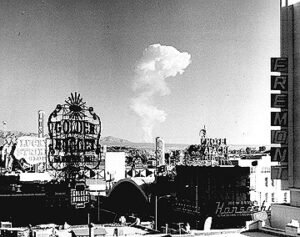 could theoretically be compensated for their losses. Of course, as many of us have seen with these kinds of cases, the process is very slow, the burden of proof for the men trying to receive compensation is heavy, and the final payout is usually quite low. RECA has awarded over $2.4 billion in benefits to more than 37,000 claimants since its inception in 1990. Still, that’s a small price to pay for the destruction of so many lives.
could theoretically be compensated for their losses. Of course, as many of us have seen with these kinds of cases, the process is very slow, the burden of proof for the men trying to receive compensation is heavy, and the final payout is usually quite low. RECA has awarded over $2.4 billion in benefits to more than 37,000 claimants since its inception in 1990. Still, that’s a small price to pay for the destruction of so many lives.
